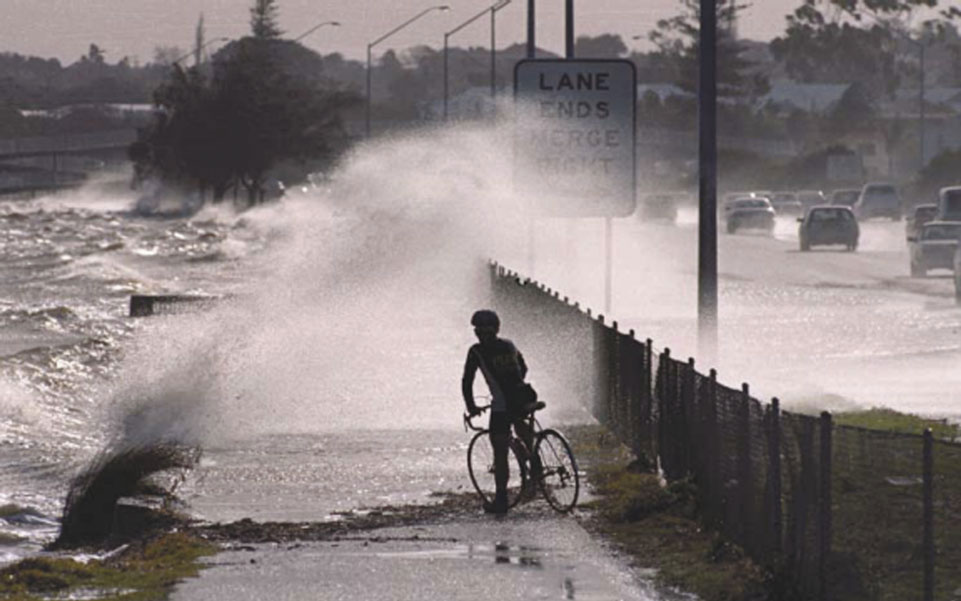
Case Study
Climate Change, the Risk to Road Infrastructure
The Road and Traffic Engineering Branch has completed an assessment of the potential risks to existing road infrastructure in coastal areas due to rising sea levels associated with climate change.

The assessment report was put together via a desktop analysis, site inspections and valuable input from regional personnel. A range of factors, such as road usage (traffic volumes), the proportion of heavy vehicles, age of pavements, roughness, network importance and whether adverse effects are likely to be felt within the next 20 to 30 years were considered. Based on the above factors, two rising sea level scenarios were used to assess the potential implications to our road infrastructure. A prioritised list of highways and major roads was drawn up to indicate which roads need closer assessment.
A 300 millimetre sea level increase could be expected within the next 20 to 30 years – a timeframe consistent with our current road planning and design horizons. With this scenario, the total length of highways and main roads at potential risk by 2032 is approximately 121 kilometres. We also consider a one metre sea level increase to be a possibility by the year 2100 whereby the length of highways and main roads at potential risk is approximately 166 kilometres.
More than 50 kilometres of State roads have been assessed to warrant earlier, more detailed evaluation. The indicative replacement value of this at risk infrastructure is in the order of $85 million.
It is important to note however, that storm surges have not been taken into account in the assessment report. More research is required before there is a useful understanding of the potential effect that climate change will have on effect of storm surges along specific coastal areas.
It is anticipated that a pilot study will be undertaken at one of the highest priority sites to identify remedial or intervention treatments to mitigate the risks and thereby ensure the ongoing provision of a safe, efficient and effective road system. The more detailed assessment will be done in consultation with other agencies and Local Government to promote a consolidated and consistent approach. We envisage that other State and Local Government agencies may be interested to peruse this report and associated methodologies when they consider the risks to future sea level rise in relation to their coastal infrastructure.

 previous page
previous page
 previous page
previous page
